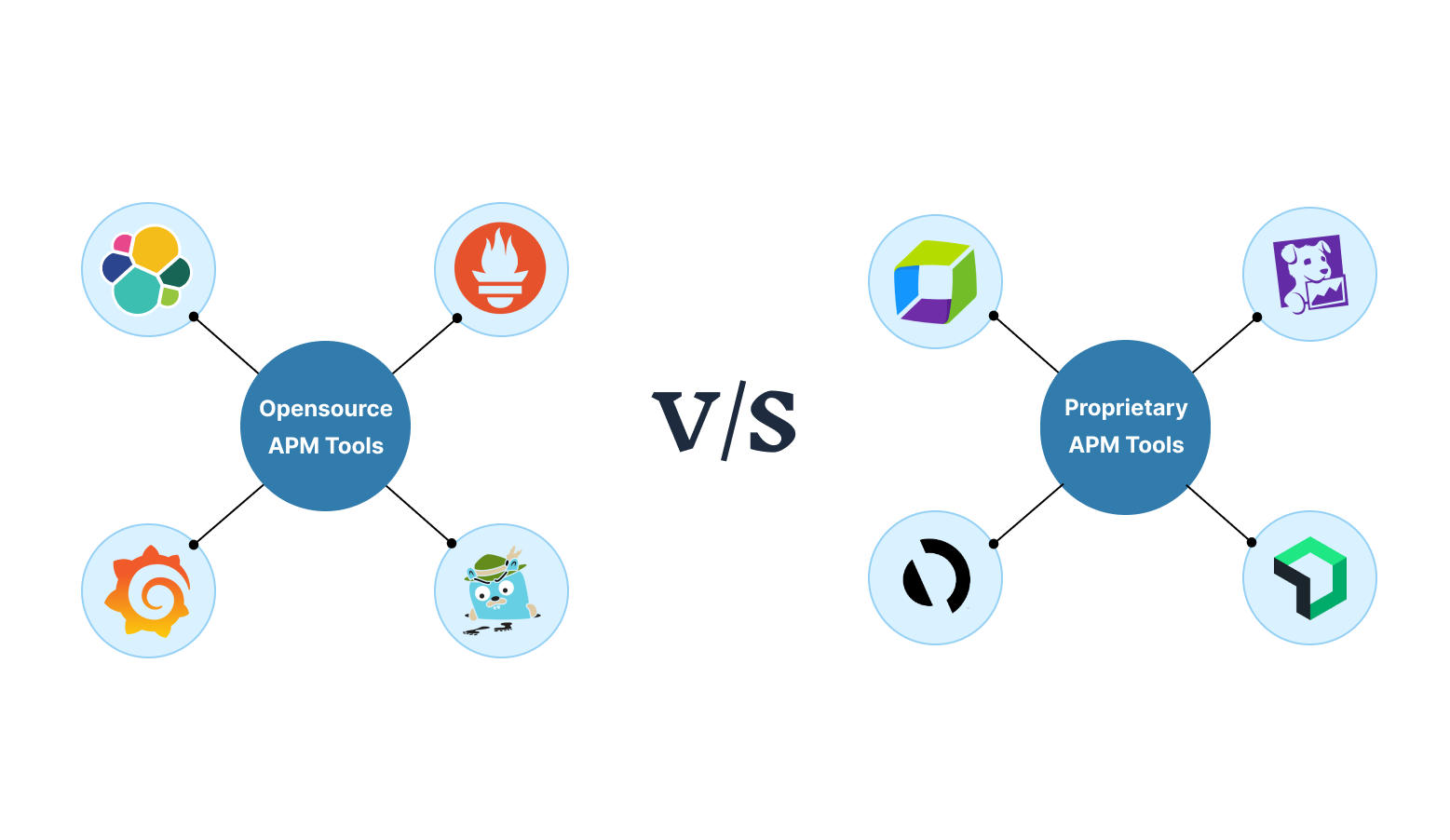Measuring application performance is crucial for maintaining user satisfaction and business success and also helps organizations track, analyze, and optimize the performance of their applications and infrastructure. APM collects various data to measure application performance such as response time, throughput, resource utilization, and error rates.
When it comes to choosing an APM solution, one of the primary decisions to make is whether to opt for open-source or proprietary options. In this blog, we'll explore the key differences between open-source and proprietary APMs.
Key Points to consider
- Product Licence Cost
- Onboarding and Operational Cost
- Customization and Flexibility
- Community Support
- Features and Functionality
- Scalability and Performance
- Vendor Lock-In
Product Licence Cost
The primary consideration when selecting an APM tool is cost. Open-source APM tools like Prometheus, Grafana, and Jaeger are typically free to use. However, setting up and maintaining open-source APM solutions entails some inherent risks. On the other hand, proprietary APM solutions have cost, and the pricing varies for each APM tool. In the case of open-source tools, the cost and setup time are often higher compared to proprietary tools. Additionally, open-source tools may incur higher maintenance costs and require more resources to operate effectively also engineers have good technical skills to setup these tools. Conversely, proprietary tools typically have shorter setup times and may involve lower maintenance costs, as the vendor manages much of the infrastructure and support. Proprietary tools often come with preset dashboards and preconfigured analytics data. Engineers can simply use these dashboards to monitor the application without needing to extensively customize them.
Community and Vendor Support
In case Open Source Project has vibrant community Support. These communities provide valuable resources, documentation, tutorials, and active support forums where users can seek help, share experiences, and contribute to the development of the tools. While proprietary APM tools have limited documentation, resources and community support. In some cases, we have to rise tickets to get support from the vendors. In open-source projects, the time taken to receive a solution for an issue can be longer compared to proprietary tools, as the support relies on community contributions. On the other hand, proprietary tools typically have a dedicated support team available to assist users queries.
Scalability and Performance
Both proprietary and Open-source APM have Scalability and Performance. proprietary solutions may offer more scalability features and support for large-scale deployments. When using open-source APM tools, organizations are responsible for managing everything, including resources and performance. In contrast, with proprietary tools, these aspects are managed by the vendor.
Organizations utilizing open-source APM solutions require highly skilled engineers to scale up and maintain performance. In the case of proprietary APM solutions, vendors typically have dedicated teams to manage these aspects,
Features and Functionality
Proprietary has more features and Functions, like providing Data analytics and machine learning capabilities, and seamless integrations with various tools and platforms. Proprietary tools like Datadog offer built-in Real User Monitoring (RUM) and Digital Experience Monitoring (DEM) tools, enabling analysis of user experience and digital performance. While open-source APM tools may provide similar functionalities, achieving the same level of sophistication may require additional configuration or integration efforts.
Customization and Flexibility
Open-source APM has flexibility and customization options. Open-source APM tools can be modified and integrated with other tools to meet our specific needs, this helps us to solve particular use cases. But in the case of proprietary APM tools it has limitations in customization, the users are bounded by vendor's solutions and features.
Vendor Lock-In
organization using Proprietary APM tools has a concern about vendor lock-in. Switching to another solution can be difficult and costly due to dependencies on proprietary technologies. Open Source solutions have it's own freedom and flexibility to migrate from one solution to another. also it has great community support for these migrations.
Conclusion
The decision between open-source and proprietary APM solutions depends on various factors, including budget, customization needs, community support, feature requirements, and scalability. Proprietary APM solutions offer convenience support. While Open-source APM tools provide flexibility, transparency, and cost-effectiveness. By evaluating these factors, the organization can decide which type of APM tools are suitable for their needs.

